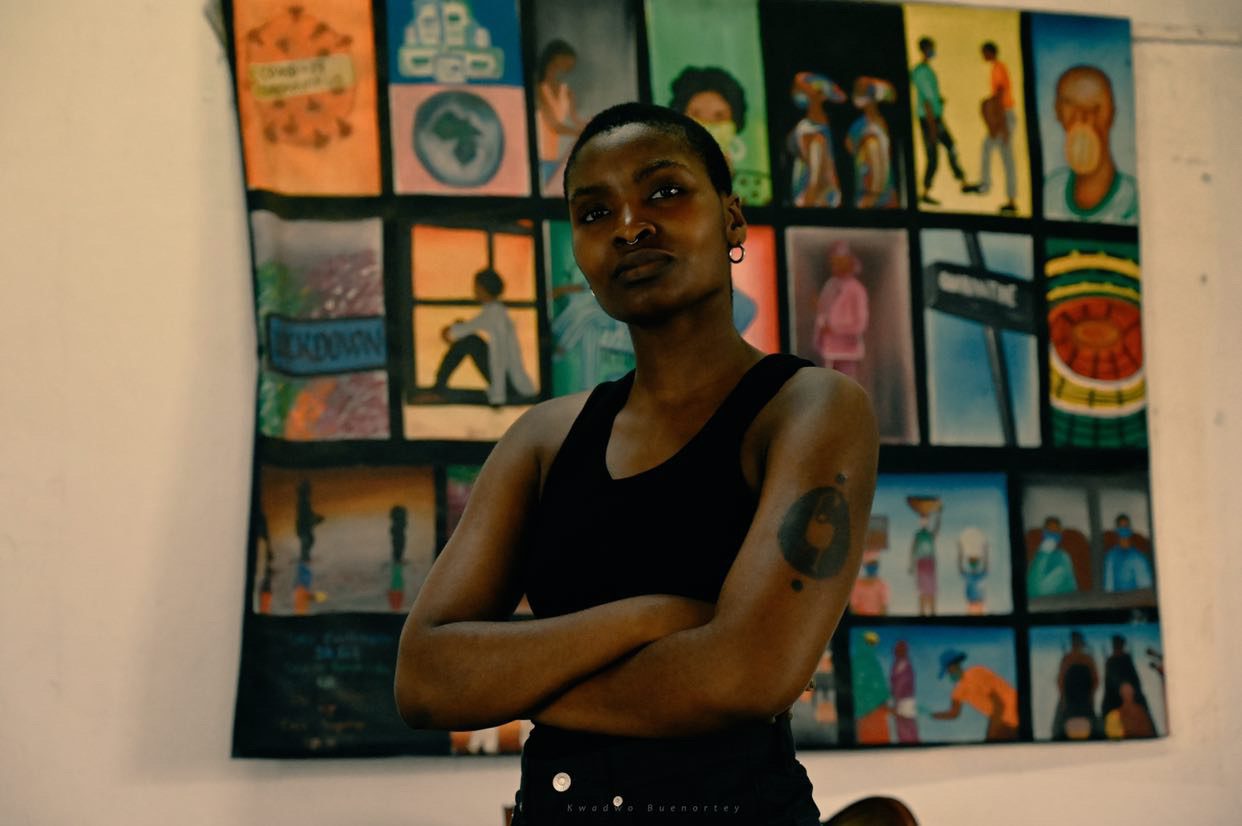
Kaitlene Koranteng in front of backdrop at Jamestown Jamestown Café. Photo taken by Agbongua Kwadwo Buenortey Okor
Last Summer Archivist and Engagement Producer Kaitlene Koranteng travelled to Accra and Tamale in Ghana, to archiving and collecting practice. Here is a diary of her trip:
The concept of Black Archival Practice seeks to testify to the complexity of how Black life is lived, documented, and remembered. In June 2024, I undertook a research trip to Ghana, funded by the Jonathon Ruffer Grant, with the intention of exploring Black archival practice in a West African context and investigating my own position as a Black archivist stewarding the iniva archive.
There were several considerations. Iniva’s existence is situated within the canon of the British Black Arts Movement, which was defined by the work of artists of African, Caribbean, and Asian ancestry and explored race, gender, and the politics of representation within Britain. I felt it was vital to examine a perspective on archival practice that exists outside Western archival and curatorial traditions. This research diary documents some of the places, people and things I learned during this research trip – a second part detailing my time Tamale will be uploaded at a later date.
Before I arrived in Ghana, my trip coincided with the 95th birthday of James Barnor, arguably Ghana’s most celebrated photographer. His career, spanning six decades, captured Ghanaian society amid its transition to independence from Britain. He was Ghana’s first full-time newspaper photographer in the 1950s and introduced colour processing to Ghana in the 1970s, among other notable achievements. His birthday month of June was dubbed the ‘James Barnor Festival’ and led to various activations, including exhibitions, events, and community archiving. A few weeks before my trip, I was invited by the Library of Africa and the African Diaspora (LOATAD) to submit a piece of writing in response to one or more of Barnor’s images, which would form part of an anthology of work. I selected the image entitled Naa Jacobson as Ballroom Queen, taken in Ever Queen Studio, Accra, in 1955. It depicts a young Naa Jacobson seated at the centre, wearing a crown. My research trip had not yet begun, but this moment foreshadowed the profound impact photography would have on my journey.
Museums
The primary focus of my trip was archives; however, I took the opportunity to visit various spaces, including museums, libraries, and visual arts institutions, as well as individuals working within these spaces. My first visit was to the Museum of Archaeology at the University of Ghana, where I met one of the curators, Gideon Agyare. The museum’s collections span Ghana from north to south. Gideon spoke in detail about the collection policy, the intricacies of object cataloguing, and the university’s responsibility to represent all of Ghana’s archaeological heritage while serving as a teaching resource for archaeology students.
National Museum of Ghana
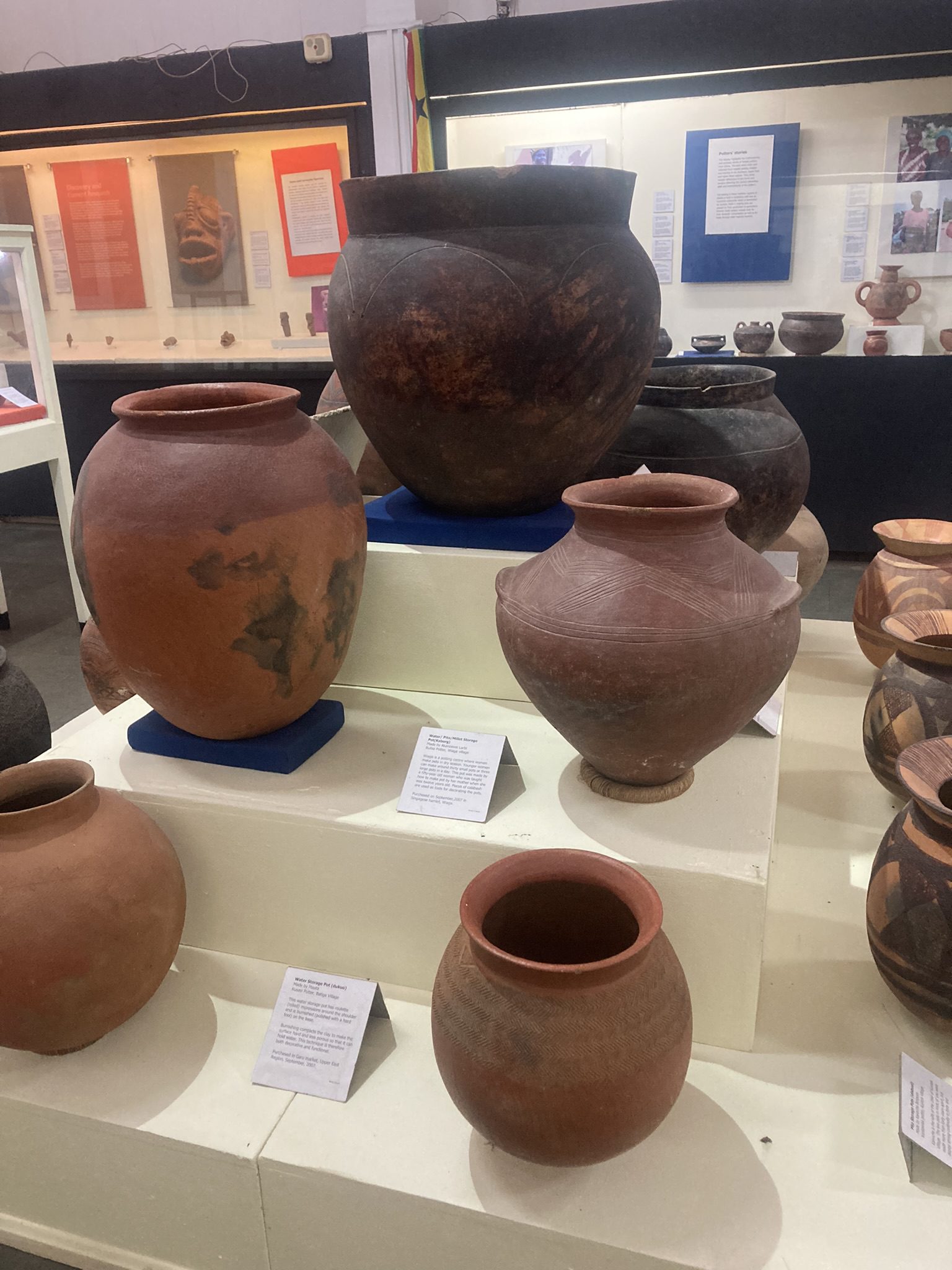
Objects at Museum of Archaeology at University of Ghana
At the National Museum of Ghana, which primarily houses archaeological, anthropological, and fine art collections, I explored approximately 10,000 objects, including textiles and gold weights—objects that were also heavily featured at the Museum of Archaeology. I met Amegah, who provided an insightful tour, and curator Elizabeth Asafo-Adjei, who spoke in further detail about the museum’s work. While the museum’s primary focus is Ghana, Elizabeth expressed a conscious decision to take a Pan-African approach, striving for representation from every African country. Oral histories play an essential role in contextualising objects such as totems and staffs. Elizabeth also highlighted concerns over cultural loss, particularly regarding the decline of chieftaincy traditions and the disappearance of indigenous languages in Ghana.
Archives and Libraries in Accra
The W.E.B. Du Bois Memorial Centre for Pan-African Culture
The W.E.B. Du Bois Memorial Centre for Pan-African Culture commemorates the American sociologist, historian, and Pan-Africanist W.E.B. Du Bois, who spent much of his later life in Ghana and died there. Situated on the site of his former home, the Centre houses memorabilia and his personal library. Established in 1985 by the Ghanaian government, it encourages visitors to learn about Pan-Africanism and the work of Du Bois. The importance of Pan-Africanism was evident in how collecting institutions conceptualise their work. There is currently undergoing redevelopment to breathe new life into space as the building itself and begun to deteriorate – despite this was lovely to be in situ in the home Du Bois and his final resting place.
J.H. Kwabena Nketia Archives
J.H. Kwabena Nketia Archives at the Institute of African Studies, a primarily audiovisual archive named in honour of ethnomusicologist Professor Joseph Hanson Kwabena Nketia. He dedicated much of his life to collecting and archiving Ghanaian musical resources and traditions. The core holdings include reel-to-reel tapes of field recordings collected from 1952 to the late 1970s, capturing Ghana’s performing arts history in the midst of independence. The work of recording, preserving, and disseminating traditional music and performance continues, with staff actively going into the field to document ceremonies and festivals.
During my second visit, I explored the archive catalogue, which carefully recorded locations and languages. I also discovered collections beyond the African context. George, one of the staff members, explained that Nketia’s colleagues from around the world had also deposited field recordings, highlighting the archive’s international reach. These collections are primarily used by performing arts students, researchers, and occasionally artists. The team is dedicated to fostering relationships with donors. The seperewa, a traditional lute instrument, is now played by very few musicians. George shared an anecdote about a skilled seperewa player who, after watching archival footage of the instrument being played in a neighbouring country, learned a new technique as a result.
Dikan Centre
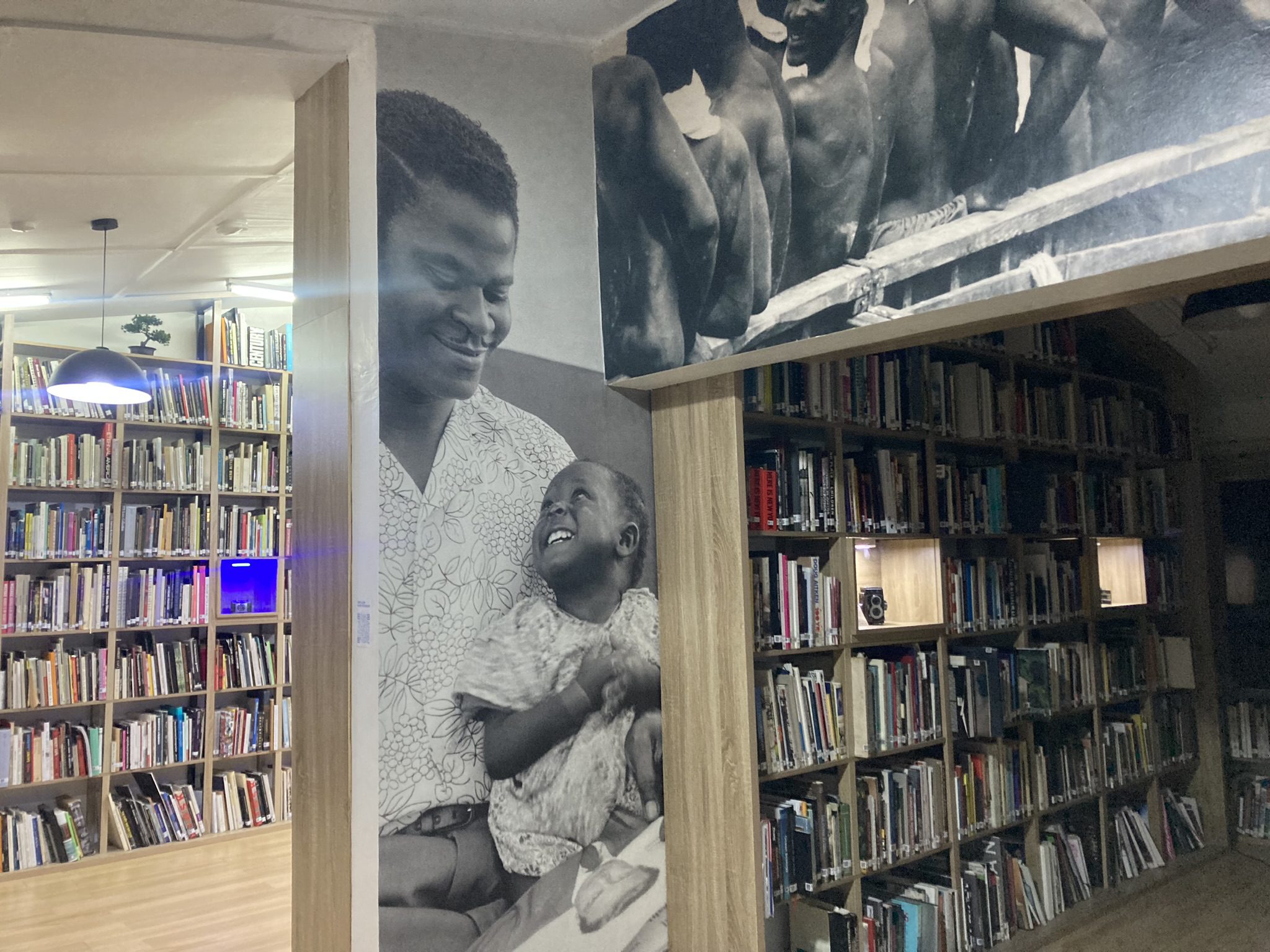
Dikan Centre Library
I also met two talented photographers, Essel and Buenortey, who were part of the Photojournalism and Documentary Practice programme. They introduced me to the Dikan Centre, a nonprofit organisation dedicated to educating Africa’s next generation of creative leaders. I had planned to attend the opening of an exhibition featuring James Barnor’s work at the center, however on arrival I was met with a dark empty building. As I was walking was the gate opened, and I was met by man who beckoned me back to explain that the lights had gone out resulting in the opening ending early. Later in our conversation I learned Kojo had recently graduated in Archival Studies at the University of Ghana and had been undertaking an internship at Dikan. After speaking for 10 minutes, the lights turned back on and Kojo kindly offered me a tour of space, where we spoke about future ambitions archiving of photography at Dikan and the future of their already rich library. The library itself is a large collection comprehensive photography & visual collection, featuring books, magazines and research materials that highlight the art and history of photography from around the world and sections focusing specifically on Africa. The Dikan campus itself had a gallery space, studio and teaching space, as well as utilising outdoor space for exhibition.
The George Padmore Research Library
The George Padmore Research Library, a public library in the Osu suburb of Accra, was built by Dr. Kwame Nkrumah in memory of George Padmore in the 1960s. It houses archival collections related to cultural, educational, and political campaign groups, as well as pamphlets, journals, newspapers, books, and publications.
It was started with the aim that people would be able to find information about African countries and people and combatting racist misformation and stereotypes. The research library has two buildings the first of which spans the African continent and range of topics including poetry, social science ect. A standout feature was of the library was the personal collection.
The second building focuses on writing about Ghana, and is largely organised in a similar fashion to the first.
Unfortunately, the collection is in need of conservation work due to the humid condition, and the age of collection.
Library of Africa and the African Disapora (LOATAD)
One place I was particularly keen to visit was the Library of Africa and the
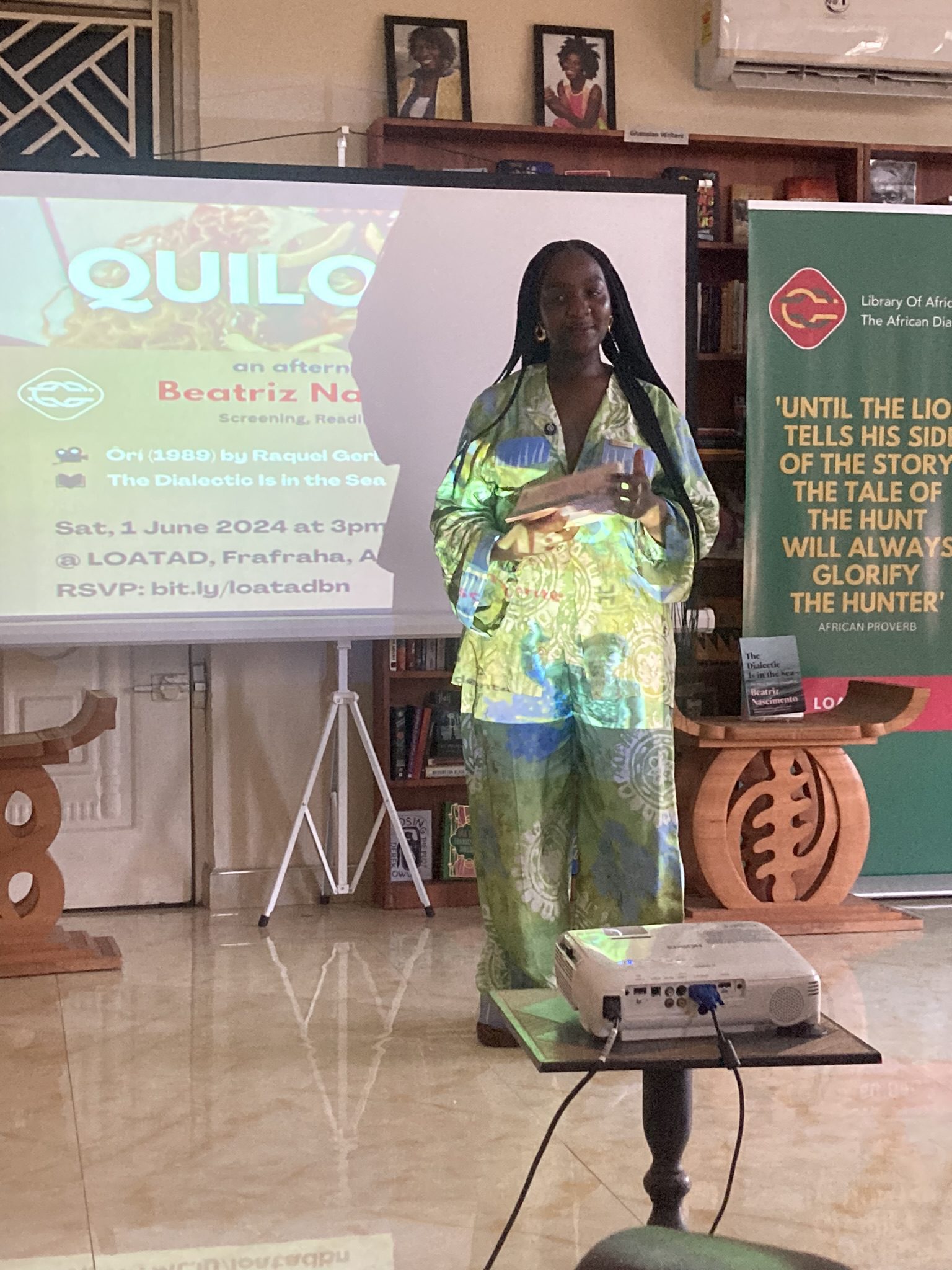
QUILOMBO: An afternoon with Beatriz Nascimento at LOATAD
African Diaspora (LOATAD). LOATAD is a knowledge-producing institution devoted to the study, preservation, and dissemination of African and Diaspora literature. I had previously visited and maintained communication with Seth and Sylvia, the custodians of the library, regarding their archival materials. During my visit, LOATAD was hosting its Black Atlantic Writers Residency, which invited writers of African descent from Africa, the Americas, the Caribbean, and Europe to collectively consider the question, What Does Africa Mean to Me? One way this question was explored was through an event led by resident Laila Garroni, QUILOMBO: An Afternoon with Beatriz Nascimento. This event included a screening of the documentary ORI, which chronicles Brazil’s Black movements in the 1970s and 1980s and the life of Beatriz Nascimento. A reading of The Dialectic Is in the Sea, the first English-language collection of Nascimento’s writings, followed the screening.
Si Hene
I also attended Vanishing Past: Community Archiving Workshop, an event forming part of the extensive programming taking place at the time. The three-day workshop provided training on preserving family histories, including the digitisation of photographs, with support from a team of specialists using tabletop scanners. The workshop featured presentations on archival and memory projects across Ghana (the_nana_project , @postbox.ghana , @thekorabea, @archiveafrica , and @vintageafricanwomen.). The event was organised by Si Hene, a nonprofit foundation dedicated to archiving and preserving Ghana’s chieftaincy and traditional culture.
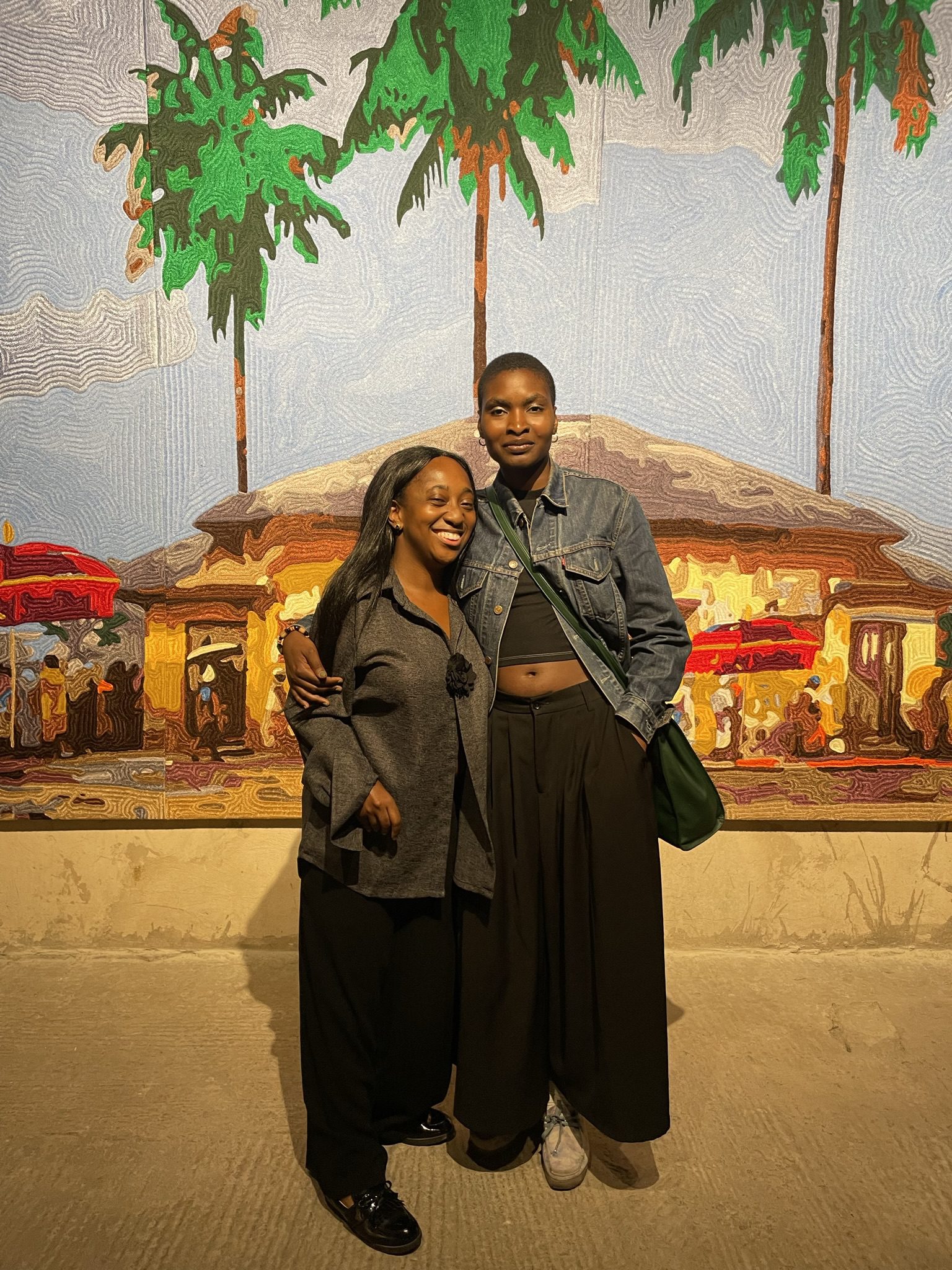
Kaitlene and Rita in front of Rita’s work at Gallery 1957
Si Hene was founded by Ghanaian-American artist Rita Mawuena Bennissan during her master’s studies. I had heard her name multiple times during my first week in Accra as someone I should connect with. After meeting Rita at Vanishing Past, she kindly invited me to her studio to discuss Si Hene and her artistic practice. Like Si Hene, her work explores Ghana’s traditional culture, reimagining archival photos with the help of traditional artisans in a contemporary context. Her journey began with an exploration of her grandfather’s archive, as he was a chief in the Volta Region of Ghana.
The success of the Vanishing Past workshop highlighted a strong appetite for more discussions. Rita expressed a desire to expand conversations around the restitution of museum objects, chieftaincy traditions, and holding space for future workshops.
Visual Arts in Accra
Foundation for Contemporary Art – Ghana
Foundation for Contemporary Art – Ghana, is a network of artists created in 2004 to offer a platform for the critical presentation, development, and promotion of contemporary art in Ghana. I reached FCA, to discuss the nature of their work – their co-director Adwoa got in touch with me shortly after and invited me in conversation with architects DeRoché Strohmayer. Whilst this talk did not specifically explore collection work, I was moved to hear about the firm’s inaugural project the Surf Ghana Collective House, developed in dialogue with was developed with the Busua community in which it resides. The project concentrated on creating a space that allowed the surf to become a central feature of the local community, encouraging multiuse, prioritising sustainable materials and continual engagement with the young people who use the space. Attending this event gave me a real insight into FCA work, who curated a space of warmth and openness. I also got a chance to briefly explore FCA’s library which, focus on contemporary art, culture and history of Ghana. Like the FCA itself the use of the library displayed openness, by encouraging anyone to use the library space for research, and use of their computer facilities with wireless internet.
Kuhenyehia Trust for Contemporary Art
The other visual arts organisation, I spoke to in more detail were the Kuhenyehia Trust for Contemporary Art. The trust runs an annual prize, where winners and runners-up receive financial support, mentorship and networking opportunities allowing the artists to showcase their work to a broader audience. I met with one member of the team Isaac, who talked me through their work, and was clear that the team a real passion for providing artists with the support they need to excel.
Please note that this blog forms is part one of my research diary. The seconded part of my research diary will recount my time Tamale, the capital city of the Northern Region of Ghana and overall summary of my trip.
 This research was made possible with Art Fund support.
This research was made possible with Art Fund support.